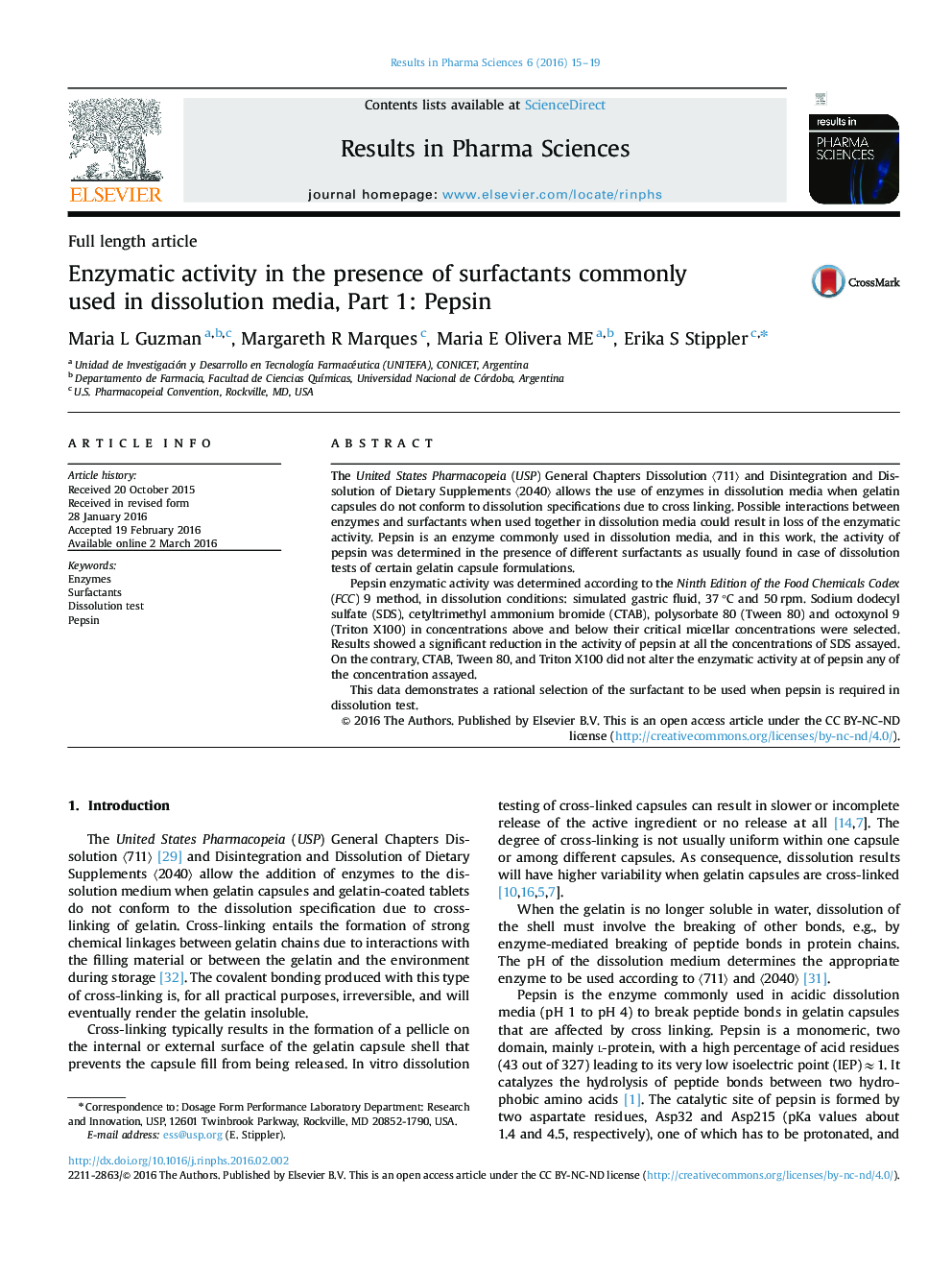| Article ID | Journal | Published Year | Pages | File Type |
|---|---|---|---|---|
| 1440005 | Results in Pharma Sciences | 2016 | 5 Pages |
The United States Pharmacopeia (USP) General Chapters Dissolution 〈711〉 and Disintegration and Dissolution of Dietary Supplements 〈2040〉 allows the use of enzymes in dissolution media when gelatin capsules do not conform to dissolution specifications due to cross linking. Possible interactions between enzymes and surfactants when used together in dissolution media could result in loss of the enzymatic activity. Pepsin is an enzyme commonly used in dissolution media, and in this work, the activity of pepsin was determined in the presence of different surfactants as usually found in case of dissolution tests of certain gelatin capsule formulations.Pepsin enzymatic activity was determined according to the Ninth Edition of the Food Chemicals Codex (FCC) 9 method, in dissolution conditions: simulated gastric fluid, 37 °C and 50 rpm. Sodium dodecyl sulfate (SDS), cetyltrimethyl ammonium bromide (CTAB), polysorbate 80 (Tween 80) and octoxynol 9 (Triton X100) in concentrations above and below their critical micellar concentrations were selected. Results showed a significant reduction in the activity of pepsin at all the concentrations of SDS assayed. On the contrary, CTAB, Tween 80, and Triton X100 did not alter the enzymatic activity at of pepsin any of the concentration assayed.This data demonstrates a rational selection of the surfactant to be used when pepsin is required in dissolution test.
Graphical abstractFigure optionsDownload full-size imageDownload high-quality image (161 K)Download as PowerPoint slide
